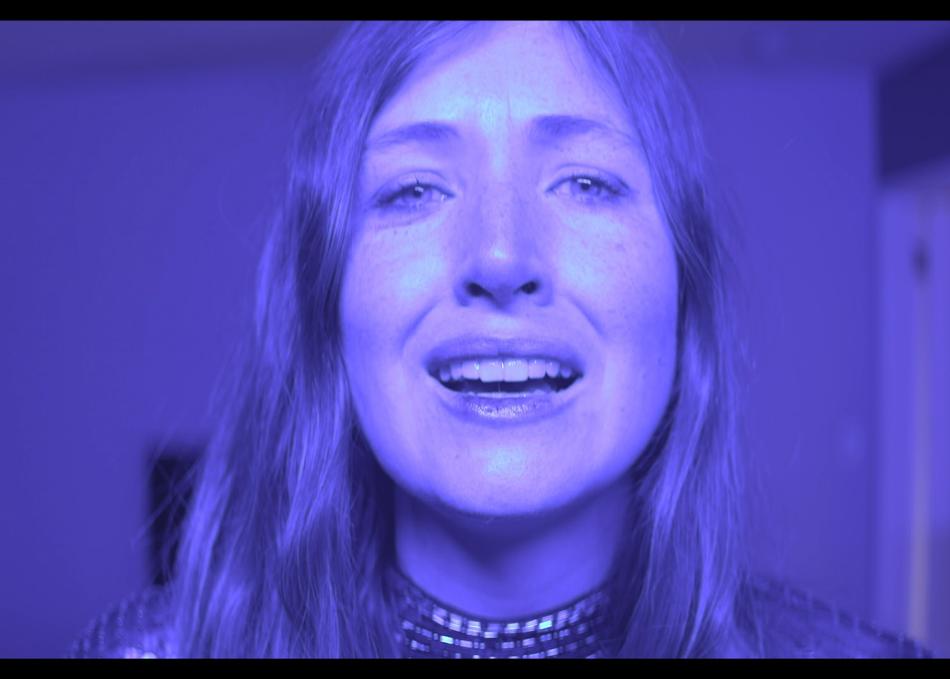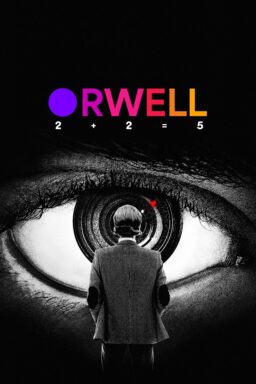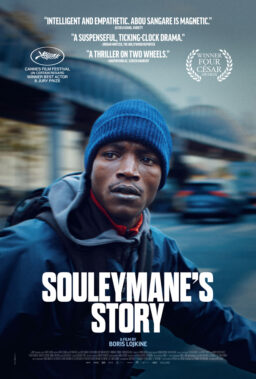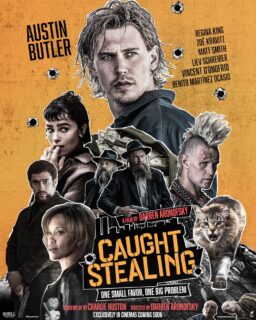Yesterday, I wrote a piece on six good-to-great documentaries that were set to premiere at the 2020 SXSW Film Festival before it was canceled because of COVID-19. We hope that these films find a new platform to be dissected and discussed as soon as possible. At the same time, I’ve been combing through the non-docs, the feature films set to premiere in sections like Narrative Competition in Austin over the last week. Once again, we’re only highlighting films we like, not kicking movies when they’re already down and were never given the moment of a world premiere. Here are five such films.
I am pretty confident that the most-buzzed film of SXSW this year would have been Amy Seimetz’s “She Dies Tomorrow,” a daring drama that has incredibly powerful resonance in the quarantine this country now finds itself under. It’s a film about existential dread, that feeling when you just know something bad is going to happen. We’ve all been there. We all have stories of people acting strangely before their deaths, as if they knew something was going to happen. Seimetz’s brilliant, riveting film takes it a step further, artistically commenting on the how we all feel a sense of anxiety and dread, and suggesting perhaps it’s contagious. With echoes of the final act of “Mulholland Dr.,” this is a surreal, experimental nightmare that somehow still feels present and timely in ways that Seimetz could have never foreseen.
The premise is relatively simple. Amy (Kate Lyn Sheil) knows she’s going to die tomorrow. She tells this to her friend Jane (Jane Adams), who blows her off as having a mental or alcoholic relapse, but later starts to have the same creeping, existential dread that her time is coming. Her friends and family, including characters played by Katie Aselton, Chris Messina, and Tunde Adebimpe, blow her off as having a mental break that will subside, but then things get even weirder.
Seimetz employs a dream logic in her visual style, using time and cuts of flashing colors in ways that make emotional sense more than literal. She’s trying to get more to a feeling than a statement, and she’s using visual language to do so, allowing large portions of the film to be free of dialogue and not driven by plot. It’s a film designed to unsettle you, but not with a traditional “scary plot” but the tools of visual art. And it works. Yes, of course, watching it in a national crisis that has led to a quarantine may have made me more susceptible to its impact, but its greatest achievement may be that not only do the characters experience what could be called contagious dread–Seimetz finds a way to pass that along to the viewer too.

Similarly experimental and also seeming to comment on a national sense of unease and anxiety is Caleb Michael Johnson’s “The Carnivores,” another SXSW film that often feels like a nightmare. It’s about a couple falling apart under pressure and ennui, but it too felt a little more urgent and unsettling due to the increased panic of the world than it may have otherwise. However, even without a virus, there’s something daring and memorable about Johnson’s vision of possible mental illness and marital strife.
Bret (Lindsay Burdge) and Alice (Tallie Medel) are struggling through a marital crisis. Alice keeps a journal of the hours she sleeps with a column for whether or not she had sex with her wife that night, and it’s a string of X marks, meaning they did not. They seem to be drifting apart, and it’s not helped by the fact that Bret’s family dog Harvie has reached an age in which expensive medical treatments are sucking up the couple’s earnings. It feels almost like Bret cares more about Harvie than Alice, which sends her spiraling. Things get much worse when Harvie disappears and Alice becomes convinced that perhaps she did something to the dog that she doesn’t remember.
Reportedly inspired by the sleepwalking of Johnson’s partner, “The Carnivores” often unfolds like a night vision, something strange and surreal. Johnson balances scenes of blunt normalcy, like Alice’s dull co-worker, with close-ups of the butcher counter that she seems increasingly obsessed with for unknown reasons. I’m not sure the climax works, but the final shot actually moved me a great deal, like waking from a bad dream and finding safety again. We all hope for that as a society soon.

One of the more buzzed horror offerings this year was Michael Nader’s “The Toll,” which actually held a virtual screening this past Sunday night in an attempt to at least approximate what would have happened in Austin, complete with a director Q&A. “The Toll” checks a lot of my horror-loving boxes, including being almost entirely a two-hander and a single-setting piece, and it wears its influences on its sleeve, even citing a few of them by name, from “The Strangers” to “The Blair Witch Project” to a few works by Stanley Kubrick. All of these influences lead to a “everything and the kitchen sink” approach that kind of overwhelms the final act, but the two leads, the great set-up, and the overall love for the genre embedded in every scene leads to an overall success.
Cami (Jordan Hayes) has just flown in from Chicago after a long-delayed flight and it’s well after midnight. She just wants to get to her dad’s house, but he lives pretty far from the airport. It’s so late that she doesn’t make him drive, getting a rideshare instead from a man named Spencer (Max Topplin), who is kind of an odd duck. He could just be socially awkward, or there could be more to it, and Cami reasonably makes sure she has her hand on her pepper spray as they get to increasingly more remote areas of civilization.
And then Nader takes his first hard right turn. Let’s just say that the set-up of a dangerous driver and a passenger victim turns into something else when Spencer’s car breaks down on a country road. It turns out they’re not alone. And maybe not even in reality anymore. Can two strangers unite against the true evil in the darkness?
“The Toll” moves, coming in at a tight 80 minutes, all of which are held ably by Hayes and Topplin, who rise to the challenge of carrying an entire film that has almost no other speaking parts. Nader allows himself one or two twists too many, especially a major final one that feels unearned and kind of cheap, but I didn’t care by then. I enjoyed the weirdness of supernatural figures in the woods balanced against the everyday fears of a woman who isn’t sure the man she’s alone with is safe. What’s more dangerous – the unknown or the terrifyingly known to most women in this country? At its best, Nader’s film bounces these two things – the reality of physical assault and the nightmare fantasy – off each other in ways that feel fresh and fascinating.

In 2015, Krisha Fairchild starred in the SXSW hit “Krisha,” from Trey Edward Shults, who went on to direct “It Comes at Night” and “Waves.” Fairchild was set to return to SXSW this year in a very different project from directors Kate McLean and Mario Furloni, “Freeland,” the untold story of how the legalization of the marijuana industry has disrupted normalcy for people who operated off the grid but happily for years. The film doesn’t come together as much as I hoped it would, but Fairchild elevates every scene, giving a great, emotional performance.
She plays Devi, a woman who has been a legend in the weed industry for years, developing strains that people come miles to smoke. And then, almost overnight, marijuana became an industry, changing the restrictions on Devi and the competition from people who could now grow weed openly. How does a small but successful operation adjust when the rules change? Can it possibly?
Shot on actual weed farms, there’s a veracity to “Freeland” that works, and it’s matched in Fairchild’s emotional performance, one that captures the fear and depression that comes with recognizing the world may be moving on without you. There’s a scene in which she walks through an old commune with a friend from those hippie days, and it has a palpable sense of something that’s been lost. The final scenes get overly dramatic in a way that I don’t think the movie needed – there’s more drama in Fairchild’s more grounded scenes, in how she conveys that Devi may be telling people that everything is going to work out, but an increasingly large part of her knows she’s lying to herself.

Finally, there’s Kris Rey’s “I Used to Go Here,” another film about a woman recognizing that the world has changed and if you can’t go home again, you certainly shouldn’t try to go back to college. The writer/director of “Unexpected” has a gentle, unassuming touch, allowing her characters to drive the narrative. Sometimes I wished the film didn’t feel quite so thin, but I enjoyed spending time with the people in it, especially Gillian Jacobs and future-star Josh Wiggins.
Jacobs plays Kate Conklin, a writer struggling through the release of her new novel, one that’s not going so well. Her book tour just got canceled, and all of her friends are planning for impending baby deliveries as she’s trying to figure out what’s next. Her college mentor and friend (Jemaine Clement) invites her to Southern Illinois University – the film was shot in Chicago and Carbondale – to do a reading and hang out for a few days. Stuck at a B&B across the street from the home she lived in with her college friends, Kate finds herself drawn to the young people who live there, going to parties and getting into even greater trouble.
At its best, “I Used to Go Here” is a fun hangout movie, driven by Rey’s affection for her characters. It avoids pointing fingers at young people the way so many of these college comedies tend to do, and similarly doesn’t make Kate into a sad sack. She’s just trying to figure out what’s next, and if it takes looking into her past to do so, then so be it.












